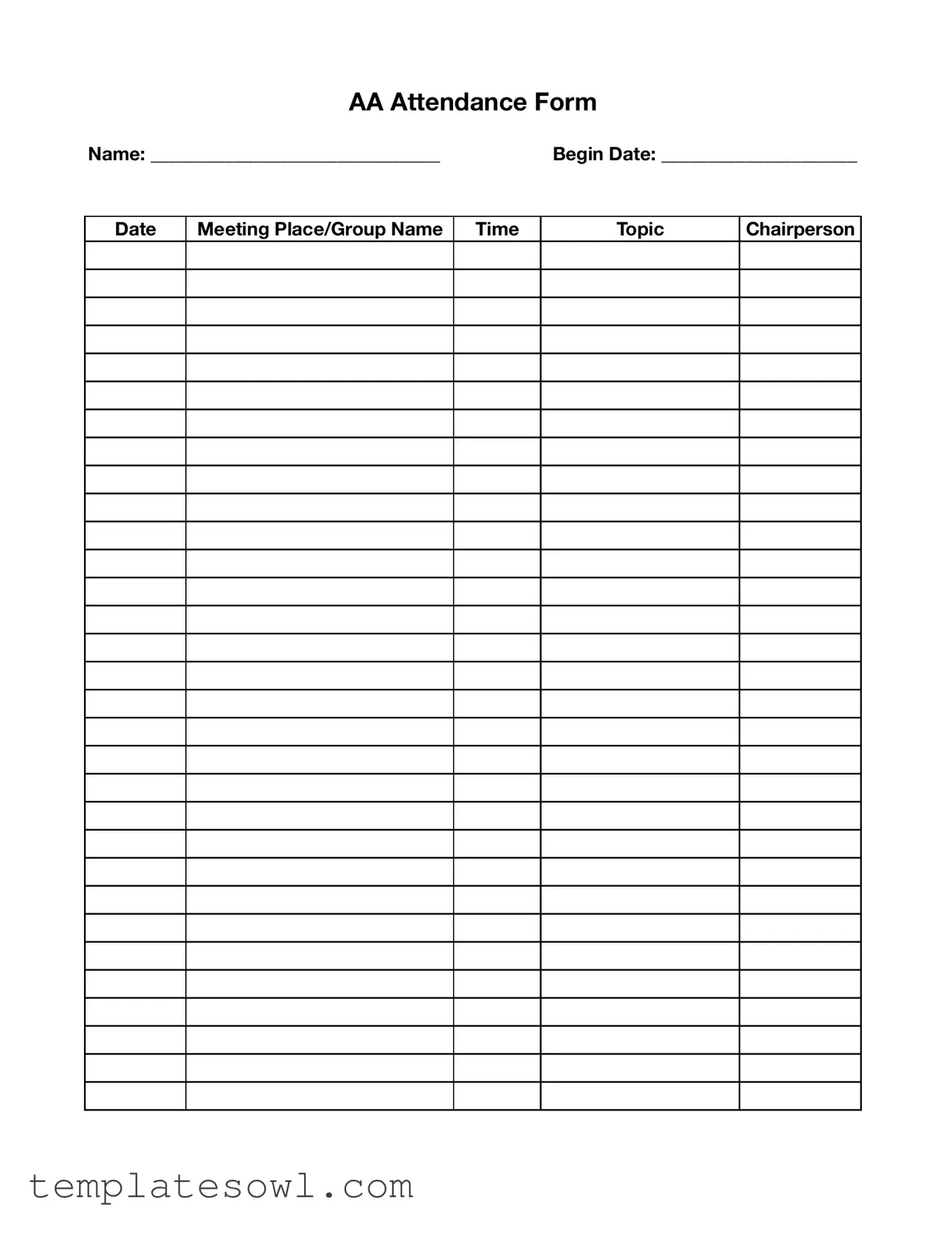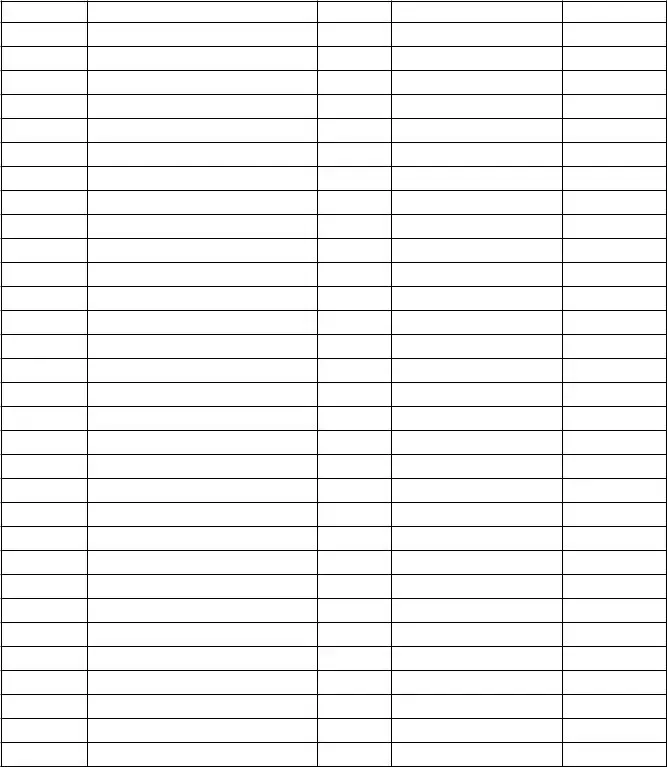What is the AA Recovery Proof of Attendance Sheet used for?
The AA Recovery Proof of Attendance Sheet serves as a record for individuals attending Alcoholics Anonymous (AA) meetings. It is commonly used to document attendance for personal progress, group accountability, and sometimes for legal or employment-related purposes. This form can demonstrate an individual’s commitment to their recovery journey.
How do I fill out the AA Attendance Form?
To complete the AA Attendance Form, start by writing your name at the top of the sheet. The begin date marks the start of your attendance, followed by the date of the particular meeting you are documenting. Next, note the place or group name where the meeting occurred, including the specific time of the meeting. Lastly, include the topic discussed and the name of the chairperson who led the meeting.
Who should use the Proof of Attendance Sheet?
This form can be beneficial for anyone participating in AA meetings. Members seeking to track their participation for personal reasons, sponsors wanting to monitor their sponsees, or individuals needing documentation for legal proceedings or job-related requirements may find it especially useful.
Is the information on the AA Attendance Form confidential?
Yes, the information collected on the AA Attendance Form is considered confidential. It is important to safeguard personal information, as AA values anonymity and privacy. Sharing this form should be handled with discretion, only providing it to relevant parties who need it for supportive or legal reasons.
What if I forget to fill out the form after attending a meeting?
If you forget to fill out the form after attending an AA meeting, it’s encouraged to complete it as soon as you remember. Accurate documentation is beneficial for tracking your progress. However, if too much time has passed, you may need to rely on recollection or other forms of attendance verification if needed for reporting purposes.
Can I use the Proof of Attendance Sheet for meetings I attend virtually?
Absolutely. If you attend virtual AA meetings, you can still use the Proof of Attendance Sheet to document your participation. Just fill in the relevant details like meeting date, time, and topics discussed, even if the meeting took place online. This will help maintain your record of participation.
How often should I submit the AA Attendance Form?
Submission frequency for the AA Attendance Form may vary based on your personal needs or requirements set by a sponsor or another accountability partner. If the form is needed for legal reasons—such as court reports or employment verification—follow specific guidelines these entities provide. Otherwise, maintaining a personal record can be beneficial for tracking progress over time.
What should I do with the completed AA Proof of Attendance Sheet?
After completing the AA Proof of Attendance Sheet, keep it in a safe place for your records. If it is intended for submission to a court, employer, or sponsor, ensure to provide it as required. Regularly review your sheets to assess your attendance pattern and stay committed to your recovery goals.

